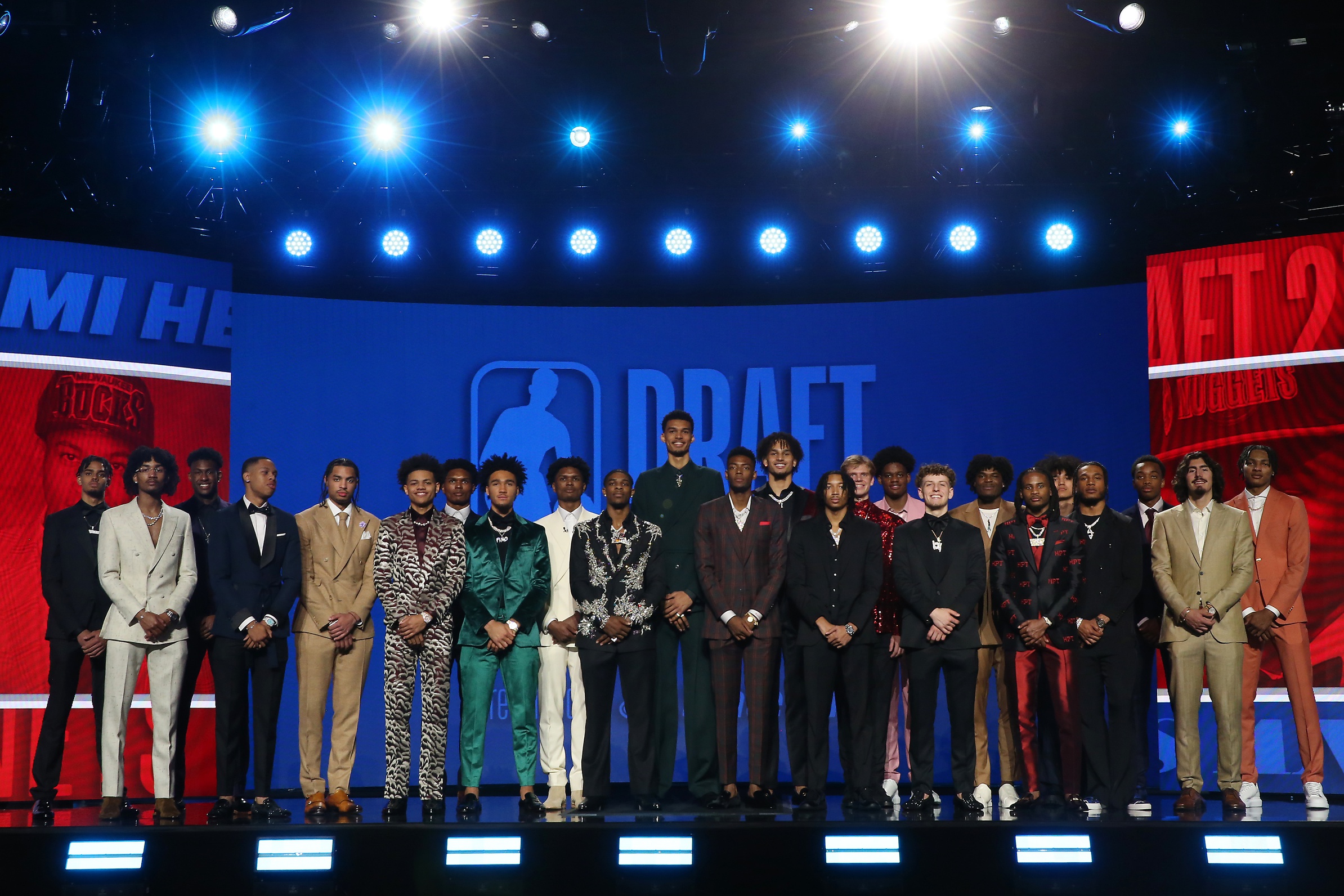Every decision can make or break a team’s future in the high-stakes world of the NBA Draft. There’s constant pressure to acquire talent that seamlessly fits into a team’s playing style, culture, and long-term goals. In part one of the Mastering The Draft series, we examined how creating personnel prototypes led to better results. Next, we will develop a grading system to better filter prospects based on those prototypes.
Mastering the NBA Draft: Crafting a Winning Grading System
The need for a systematic approach to player evaluation has never been more critical. This is where the Prototype Grading System steps in. It is a comprehensive framework designed to streamline the evaluation process. It can significantly increase the chances of drafting impact players when used correctly.
Foundation of Prototypes
At the heart of the Prototype Grading System are prototypes. NBA positions have defining characteristics, such as distinct physical and skill-based prototypes.
Whether it’s the playmaking prowess of a point guard, the rim-protecting abilities of a center, or the versatility of a wing player, each position demands specific attributes for optimal performance.
Comprehensive Evaluation Process
Crafting a successful Prototype Grading System begins with a thorough evaluation process. Scouts and analysts must leave no stone unturned in assessing players’ basketball skills, athleticism, physical attributes, injury history, and character.
This process involves attending pre-draft events, interviews, and exhaustive film studies to paint a complete picture of each prospect. Thoroughness ensures that you have all the necessary information to make informed decisions.
Grading System
A robust grading system is the cornerstone of practical player evaluation. This system objectively assesses a player’s potential impact by combining numerical and letter grades. Numerical grades, ranging from one to ten, indicate a player’s overall draft-worthiness. While, letter grades offer specific insights into a player’s strengths, weaknesses, and fit within different team structures.
Letter grades within the Prototype Grading System serve as invaluable tools for player classification. Grades such as A or B may signify elite offensive skills, defensive prowess, or all-around contributions. In contrast, grades like D or F highlight players with deficiencies. A player’s lack of height, speed, or shooting ability could be a reason for receiving these grades. Each grade provides crucial context for decision-makers.
Examples and Case Studies
Examining real-world examples and case studies is essential to illustrate the practical application of the Prototype Grading System. By dissecting the draft histories of successful NBA franchises and identifying the players who exemplify each grading category, teams can gain valuable insights into the system’s effectiveness. Regardless of the draft circumstances, empowering you to make the best decisions for your team gives you control over the process.
Decision-Making Process
Central to the Prototype Grading System is a data-driven decision-making process. Scouts and analysts leverage information, including basketball IQ, athleticism, shooting mechanics, defensive instincts, and improvement potential, to make informed draft selections. Understanding the team’s optimal play style, philosophy, and roster needs guides each decision.
Focus on Prototypes
In a league defined by its diversity of playing styles and strategies, prioritizing players who fit the prototype for their respective positions is paramount.
Teams must identify prospects with the requisite skills, physical attributes, and basketball instincts to thrive in the NBA.
By adhering to this focus on prototypes, teams can build cohesive rosters capable of sustained success.
Limitations and Exceptions
While the Prototype Grading System provides a structured framework for player evaluation, teams must acknowledge its limitations and exceptions. Not all players fit neatly into predefined categories, and there may be outliers whose potential transcends traditional grading metrics. The design of the Prototype Grading System keeps this in mind.
It offers flexibility, allowing teams to navigate the complexities of the draft with clarity, regardless of the unique circumstances of each draft scenario. In conclusion, the Prototype Grading System is a theoretical and practical tool that can revolutionize the NBA Draft evaluation. By implementing this system, teams can take a significant step forward in their quest for talent, aligning their strategic vision with their draft selections.
By establishing player prototypes, implementing a comprehensive evaluation process, and leveraging a robust grading system, teams can enhance their ability to identify and acquire talent that aligns with their strategic vision. In a league where success hinges on the ability to make wise personnel decisions, the Prototype Grading System offers a proven pathway to sustainable excellence.






